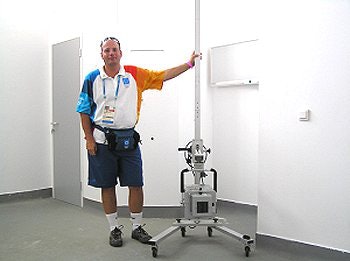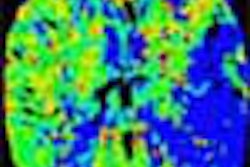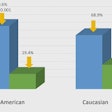
MARKOPOULO, GREECE - It's hard to believe the cross-country course used in Olympic equestrian events is even in the same city as the rest of the equestrian venue. The course is a bucolic maze of tree-lined waterways and imaginative jumps (Grecian pots and boats), hidden in the sprawl of stark white tents and simple wood structures, and laid out at the foot of the brown and dusty hills surrounding the Athens airport.
The Markopoulo Olympic Equestrian Centre, free of shade and so large that venue staff travel around in golf carts, has an ephemeral, displaced feel to it, as though it had been put up just to be taken down, as most of it will at the end of the Paralympic Games in late September.
One might think, then, that the venue's medical staff is working under difficult, front-line conditions. But the medical facilities here are some of the best in Europe. They were opened in October 2003 for use at the International Show Jumping Competition. The facility, owned by the Race Horse Association of Greece, is operating under the auspices of the Athens Organizing Committee for the duration of the games.
Dr. Yannis Aliferopoulos, a Greek veterinarian who studied horse medicine in Hungary, is veterinary clinic supervisor. He oversees a staff of 12 dedicated veterinarians and 30 volunteer animal doctors who have rotated in and out during the competitions. The staff includes noted husband and wife equine specialists, Drs. Jack Snyder and Sharon Spier of the University of California, Davis. Snyder has been chief of surgery at every Olympics since the 1988 Seoul games.
 |
| Veterinarian and clinic supervisor Yannis Aliferopoulos, wearing the distinctive polo shirt issued to all workers at the 2004 games, stands with the x-ray machine in the pristine equestrian clinic. |
Aliferopoulos wishes he could spend the rest of his career at the Markopoulo facilities. "This is very up-to-date equipment. We have everything. The facility has been praised by doctors from all over the world," Aliferopoulos said. "It's the best equine clinic in the Balkans, and one of the best in southern Europe. We have two operating theaters -- double everything except for the very expensive machines we got from Kodak."
The Eastman Kodak Health Imaging machines on site are the DirectView CR 8000 and the DryView 8200. The DirectView is a computed radiography unit that converts exposures taken with a portable x-ray head into digital images that can be manipulated and stored digitally, or printed on the DryView.
The radiology department is also equipped with two ultrasound machines, which like the x-ray head, are from companies other than Kodak. Which ones? A spokeswoman at the equestrian venue said that sponsorship agreements prohibit them from disclosing the manufacturers of those machines.
The radiology department is not equipped with the latest and greatest in equine medical technology, the horse MRI scanner, but Aliferopoulos said that was OK.
"We're fine with what we have," he said. "We have more than enough in the field of diagnostics."
In contrast to the facilities for human athletes, the equine radiology staff has not been overtaxed during the games. There are 220 horses under their care, but only about 20 animals have been imaged. That's due in part to the very stringent treatment standards imposed by the International Equine Federation (FEI), which oversees the competition. Whether diagnostic, prospective, or otherwise, all medical care must be authorized and supervised by FEI officials.
But the equestrian events, which span the entire Olympic calendar, have also been relatively injury-free. No horse has suffered a catastrophic injury, or been scheduled for surgery. Aliferopoulos said the injuries he's seen have been "just the normal stuff, like human injuries; the strains under competitive stress."
Two horses, Who Knows Lilly from Argentina, and the French horse Dilene De Cephe, suffered acute lameness and were feared to have sustained fractures, but x-ray and ultrasound revealed both suffered from "bowed tendon" and were treated with analgesics.
Though conservative, that treatment effectively ended the competition for those horses, as analgesics are on FEI's list of banned medicines and treatment. Also prohibited within five days of competition is the shock-wave treatment regularly used in soft-tissue injuries.
"We have to do everything under (the FEI's) direction," Aliferopoulos said, "but they're mostly focused on doping."
By Matt King
AuntMinnie.com contributing writer
August 26, 2004
Related Reading
Equine MRI clarifies navicular disease, August 22, 2004
iCRco introduces CR for vets, June 1, 2004
Veterinary imaging and radiotherapy center opens, November 11, 2002
Copyright © 2004 AuntMinnie.com


















